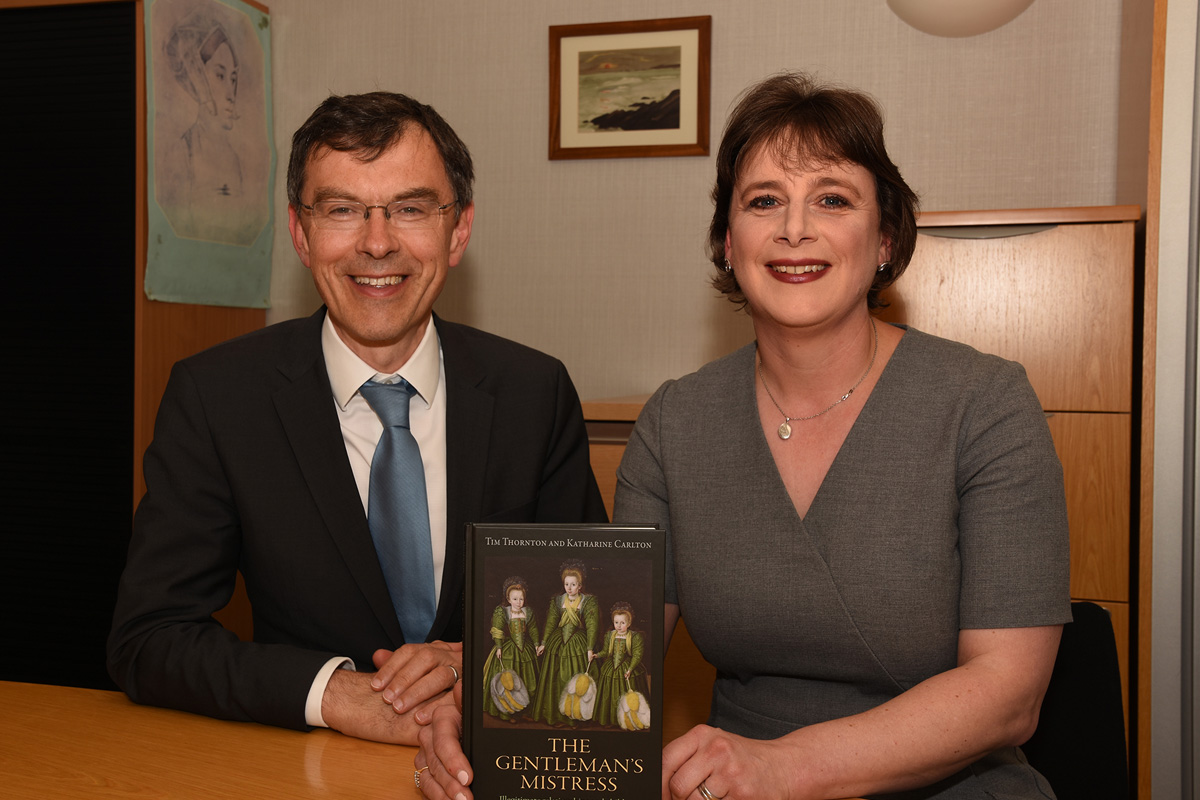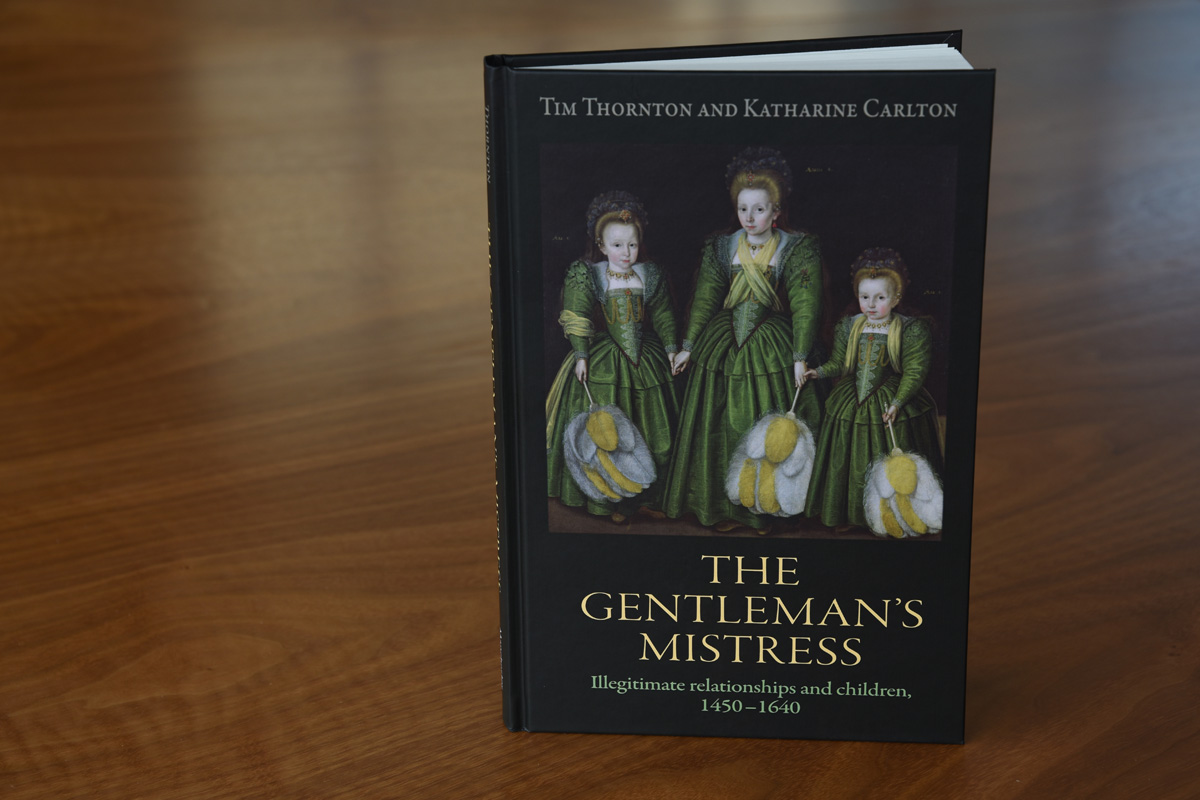New book shows how the upper crust clamped down on extra-marital sex among the lower orders, but singly failed to practice what they preached

THE lords, ladies and landowners of Tudor and Stuart England were quick to condemn the lower orders for extra-marital sex, but were more than happy to indulge in it themselves.
Historians at the University of Huddersfield have uncovered how this led to surprisingly large numbers of illegitimate children born to wealthy and titled people in the 1500s and 1600s. Many of these offspring were well provided-for and retained elite status, often being given plum jobs.
Nor was it just a case of upper crust men supporting mistresses or dallying with servant girls. Gentry women equally took their share of illicit lovers.
This was also against the backdrop of a Protestant Reformation that meant more people were intolerant of sexual immorality. Special church commissions were established to investigate the issue and their records provide many of the varied and sometimes sensational case studies included in a new book titled The Gentleman’s Mistress – Illegitimate relationships and children, 1450-1640.
Authored by Professor Tim Thornton and Dr Katharine Carlton of the University of Huddersfield, it breaks new ground by investigating illicit sexual relationships among the gentry of England between 1450 and 1640.
The two researchers write: “Approximately one in ten gentlemen who made wills during the period in the North of England made some mention of illegitimate offspring, suggesting that illegitimate relationships and children were to be found in at least 10 per cent of gentle families. The illegitimate offspring of gentry and noble families participated in office-holding and local government, and their marriages formed part of the social landscape of the period.
“Yet historians have never explored the extent and implications of this situation.”
One of the book’s conclusions is that there was “a striking capacity for a double standard to operate whereby gentry adulterers could condemn lower-status adulterers, and those with a crop of illegitimate offspring could be in the vanguard of those pursuing the pregnant and unmarried, without apparent difficulty”.
Dangerous liaisons
The Gentleman’s Mistress, which focusses on the North of England, has chapters that investigate the extent of bastardy among the elite; the role and status of mistresses; gentlewomen and their lovers; and the fate of bastard children. The authors include a large number of the stories they uncovered among wills, court cases and proceedings of the special commissions set up to combat immorality.
Vivid language abounds, such as a 1594 case in which a man named Michael Constable described Alice Kirkby as “whore, arrand whore, curtall knave, drabbe, scould, pockye queane and pockye whore”.
Another theme of The Gentleman’s Mistress is the plight of the much-derided “cuckold” – a husband whose wife has entered a sexual liaison with another man. But one of the most bizarre case studies in the book, from York, has a cuckolded husband trying to engineer the situation to his advantage.
In 1598, Frances Nelson was prosecuted for her extra-marital relationship with Charles Barnby. However, it emerged that Nelson’s husband William had drawn up a legal document which laid out the terms of Barnby’s access to her body – a substantial annuity. William Nelson then conspired with one Maria Readshaw to catch his wife and Barnby in bed together, enabling him to sue for divorce.
Professor Thornton and Dr Carlton write that: “The whole scheme unravelled when Readshaw attempted to blackmail Barnby, who ‘promised her a tuft taffety gowne and a kirtle of figured sattyn for her favor to conceale the said fallt’. However, after twelve days, she had not received the clothing and reported Barnby’s conduct to the courts, implicating her own misconduct in the process. The potential benefits to William Nelson and Maria Readshaw ensured their prosecution for bawdry”.
His and hers
Professor Thornton, a leading historian of the Tudor period who is also Deputy Vice-Chancellor of the University of Huddersfield, explained that The Gentleman’s Mistress sprang from a study that he and Dr Carlton carried out on wills from the period.
“They showed a very large proportion of the gentlemen and noblemen were recognising bastard children and that went against what most historians would expect – that you would have been seeing a stronger commitment on the part of the gentlemen and noblemen to a conventional form of marriage.
“Forces such as the impact of the Reformation and general expectations of behaviour imposed by the state should theoretically have been pushing them to conform and to reject illegitimate relationships, but we weren’t seeing that in the wills,” said Professor Thornton.
So he and Dr Carlton then used more source material and have established that across the North of England there was a pattern among the elite of illegitimate relationships and bastard-bearing well into the 1600s.
“Strikingly, this doesn’t just involve what historians might have expected – which is elite males having relationships with non-elite women, maybe servants, who were perhaps more or less victims in the relationship. Fairly frequently the female participant in the relationship is also a noblewoman or a gentlewoman,” continued Professor Thornton.
“There does also seem to be a certain amount of choice being exercised by a lot of the women in these relationships. At times, you see that they are the ones who are taking non-elite lovers. And that goes against a lot of the assumptions people have made.”
More news
Peterloo Massacre subject of Luddite Lecture
Former Huddersfield lecturer Dr Janette Martin gave the 2019 Luddite Memorial Lecture on the legacy of the massacre across the North
Third Crusade essay wins international prize
History student James McHale offered his interpretation through his coursework essay and it won him the prestigious Merriman Prize
Explores the lives of 17th century ordinary folk
Professor Jessica Malay will scrutinise over 8,000 legal documents for clues about the lives of ordinary 17th century men and women

